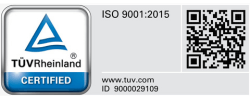Relative Humidity and Controlled Environments, Humidity is characterized as the water vapor substance of a gas. Absolute Humidity (AH) = (mass of water vapor/volume of air blend) Relative humidity is the measure of water vapor in air as a level of the amount required for immersion at a same temperature. Relative Humidity (RH) = (real vapor density/immersion vapor density) x 100%.
Most of the time, both research and non-research, humidity is talked about as far as relative humidity as absolute humidity is hard to apply to most circumstances. For controlled conditions, relative Most of the time, both research and non-research, humidity is talked about as far as relative humidity as absolute humidity is hard to apply to most circumstances. For controlled conditions, relative humidity impacts both nature’s capacity to control temperature and the life and development of the substance. Relative humidity and temperature are firmly tied in the little volume of a growth chamber as even small temperature changes cause critical changes in the relative humidity level. At the point when humidity levels are critical to the research being led, it is significantly important that the temperature control is both steady and exact.
Two Components to Controlling Humidity
There are two parts to controlling or keeping up relative humidity levels in an incubator or growth chamber. The principal segment, adding humidity to the environment, is generally straight-forward and can be complete in a variety of ways dependent on the size of the environment, the required temperature range, the light force levels and the required relative humidity rate. The most widely recognized ways are:
1. Pan type or reservoir humidifier – the least difficult framework which comprises of a pan/reservoir of water and in most cases, some kind of heater to help with evaporative humidification. Typically, it is controlled by a humidity sensor.
2. Ultrasonic humidifier – a further developed system that uses a transducer wavering at a high frequency to deliver ultrasonic waves which are coordinated to the water surface, atomizing the water to a very fine mist. Again, generally controlled by a humidity sensor.
3. Splash nozzle/spray mist – a constrained air system that uses a valve/nozzle to spray mist into the supply air of the chamber, the mist at that point being circulated with the conditioned air.
The second part to controlling relative humidity is dehumidification. This is most generally accomplished in a controlled situation by the utilization of a refrigeration/cooling coil dehumidifier. This system comprises of an electrical heater and one dehumidifying evaporator that is discrete from the chamber cooling evaporator. At the point when dehumidification is required, the temperature of the evaporator will drop to the point where the chamber moisture will gather on the coil. The heater demonstrations to reheat the dried air back to the customized temperature before the air is come back to the chamber condition.
For further queries, please get in touch with Isotech Technology, best humidity chambers manufacturers.


Leave a Reply